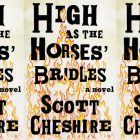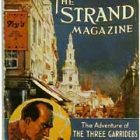Guest post by Bridget Lowe
I have always lived in relationship to the objects around me, sharing an intimacy with inert matter that can yield both exhilarating and excruciating results–plastic and primary colors make me feel physically ill (especially in combination), while natural wood or perfectly faded paint can induce euphoria. My point is that I find myself constantly aware of the objects I’m surrounded by and have strong feelings toward the things I choose (or don’t choose) to become a part of my life. I’ve been frequenting thrift stores, estate sales, and antique shops for years now, always hoping to encounter that little something that speaks to me in a significant way. As a child this resulted in some baffling purchases–old women’s wigs, an antique cornhusker, a giant 1950s adding machine that my sister and I bought and lugged home from a neighbor’s sale and would gingerly plug in for short periods at a time, because it smoked so badly and smelled like burning hair…there was no outward rhyme or reason to my purchases, though I can still remember what they signified for me at the time.
This past weekend I had the surprise privilege of entering the home of American artist
Ernest Trova.
Mr. Trova, a native St. Louisian who remained so throughout his life,
passed away last year at the age of 82. An internationally recognized, self-trained artist, Trova made his official debut at age 20 when visiting judge Max Beckmann chose his 1947 mixed media piece “Roman Boy” as winner of the museum’s annual exhibit:
Because my purpose in visiting was to attend the sale of his estate, I had apprehensions–entering the home of anyone who cannot refuse you raises serious questions of one’s culpability in a possibly exploitative endeavor. But I quickly noticed that Mr. Trova and I seemed to have many common interests–namely medical science, animals, and body parts (false teeth, glass eyes)–and these commonalities eased my mind with the possibility that the deceased Trova and I were in some kind of object-conversation. Or that I could at least save some small object or two from being purchased by the woman next to me who commented that the sale was “just a bunch of old man stuff.” I wondered what kind of old men she was lucky enough to keep company with (and that would willingly keep her company).
In the 1960s and ’70s, while Warhol was busy being a talented flirt, Trova explored celebrity and image reproduction by remaining steadfastly loyal to a few subjects, namely Mickey Mouse, Julio Iglesias, and his own ubiquitous “Falling Man,” an unchanging armless figure he used again and again, in all positions, situations, and mediums. In an artist statement on the Falling Man, Trova writes:
Personally, philosophically, the Falling Man accepts and meets his environment with rational detachment and non-hysteria. There is no final solution to the Falling Man theme except evolution[…] In the future as “man” changes so will his philosophy[…] The Falling Man theme is an attempt at depicting man rising above his nature, his environment, his socio-political entanglements, his time.
Such a statement, beautiful and visionary on its own, is even more interesting when considering the correspondence Trova initiated with Ezra Pound, eventually publishing Pound’s work in his literary magazine The Mood in 1950 while Pound remained in St. Elizabeth’s. Other than a record of its holding in the Yale Library Beinecke Rare Book and Manuscript Collections, I couldn’t find much else about this exciting collaborative effort.
What may seem a far cry from correspondence with Pound, Trova was featured in a
1968 Life magazine as an avid Mickey Mouse collector, where he’s described as “an amiable man, not the least cold or calculating.” But ubiquity was a large part of Trova’s artistic vision, and his personal takes on Mickey Mouse are usually challenging works that question the very pervasiveness he lauds. He explains the Disney character’s appeal in a much later
2009 interview, recorded shortly before he passed away: “Mickey Mouse is an indelible image[…] that has been scattered all over the world.” He says the same thing, albeit visually, in “Mickey Mouse World”:
At the estate sale, his devotion to Julio Iglesias was also readily apparent, as a few giant posters lingered in the upstairs bedroom, and several of what were dubbed his “Julioscopes,” kaleidoscopes full of images of Mr. Iglesias and glittery objects, remained for sale with other art pieces beyond my budget.
What I could afford and what I happily chose for my purchase was a series of eight surgical images (six shown below) crudely cut out of a how-to book for soldiers at war and framed in cheap black frames.
These simple frames were in several places around the house, and I loved that whatever image was within them came fully to life. One held a picture of a life-size robed and crowned king made entirely of garlic bulbs. The photograph was a simple snapshot with the date in digital neon in the right corner. Whether Trova took the picture, or even framed it, would be difficult for me to determine in any final way (the same goes for the surgical pictures), but I prefer to think that he did.
In the 2009 interview, Trova discusses his frequent trips to thrift stores. He even mentions a particular Goodwill on Forest Park Boulevard in St. Louis, where I have purchased several things as well. It’s not my favorite in the area anymore–the selection is too “cleaned up,” and undesirables (old strange things, usually what interest me most) aren’t even tagged and put on shelves.
While Trova may not have been “cold or calculating,” he was no Midwestern sucker either. Just because he made it look easy doesn’t mean it was. Trova is the rarest kind of artist–someone truly born to filter, like a giant gill, everything the world has to offer. As a younger person the world offered me smelly wigs, useless farm instruments, Mad Men-era adding machines–but deeply curious, I was practicing living in homage simply by remaining open to the strange offerings of this universe. In answer to what he looked for at the thrift stores in St. Louis, Trova responded with his usual aplomb: “Whatever my eye took a fancy to.”
This post was greatly helped by the excellent etrova.org, created to accompany the first posthumous exhibition of Trova’s work at White Flag Projects in St. Louis, through July 17, 2010. It was also informed by the lively article and interview of Jeanette Cooperman, available in both audio and text format here.
This is Bridget’s ninth post for Get Behind the Plough.



